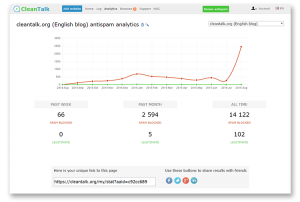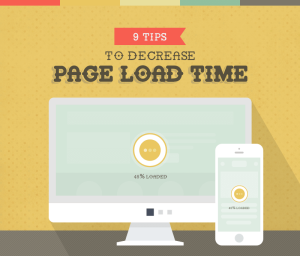Why Facebook ads matter
Facebook advertising has been taking continues to take paid marketing by storm illustrated, again, by their latest (2016 Q1) ad revenue numbers to the tune of $ 5.201 billion – just know that’s a whole load of zeros. That’s 57% up on the same point in 2015 with mobile accounting for 82% of total ad revenue. That plays along the lines of around that same number of ad impressions served on mobile vs desktop. If you’re a business owner with a website and don’t consider mobile first in your design and development then you’re already behind the curve.
Facebook’s daily active users continues to grow, even in saturated regions such as North America and Europe, albeit at a smaller rate with a bigger growth in Asia-Pacific and elsewhere. The opportunity is truly global and if you’re not currently taking advantage of the Facebook ad platform.

If there was ever a validation that a platform was well primed for marketers it comes in the form of advertisers shifting large sums of ad spend into the Facebook platform.
The startup dilemma
I have the privilege of advising startups at the early stage of development, both pre and post traction with one oft repeated question after hearing about the potential of Facebook: how do I get started? This isn’t an entirely easy question to answer because every business has a different set of capabilities, gaps and opportunities.
The quickest method is to find a Facebook ads freelancer that doesn’t over charge or under deliver to setup and run this for you. Good luck with as they’re few and far between. The problem lay with the short supply of experienced and knowledgeable Facebook advertisers and the high demand from SMEs. The argument also stands for agencies, with the best of them rightly asking for a retainer of some sort (to cover operational costs) to overcome the small spends you’d likely start off with, which instantly becomes a barrier for smaller businesses.
Due to this, I’ve helped some startups get going themselves by understanding the basics and making some headway into the platform. This does rely on having someone in the business with analytical or marketing experience which, if you’re serious about success, at least one person in your team will exhibit. I recently worked with an accountant who learned the Facebook ads platform and turned his ads account profitable after a few months. As a founder or part of the early founding team, you’ll know that every dollar spent can make or break your business and whilst snake oil salesmen do exist in any industry, digital marketing is one in which many seem easily duped.
It doesn’t require large budgets and you can, as a resource-strapped startup try this out for yourself. If you get Facebook advertising right, the reward will far outweigh the effort you’ll put in against your other startup priorities. As with any startup endeavour there’s a risk-reward worth measuring up against your other opportunities.
Use this guide as a primer to getting yourself and your company onto the road to learning as to whether Facebook ads can work for you and how to exploit the platform.
Option 1 – hire an agency
My advice here is – don’t. At least until you know what to expect. It may feel they can give you faster growth with lots of resource and expertise at your disposal but remember the majority of agencies have a prime objective of survival and growth through recurring billings and not your startup’s success. Some will argue that your success is paramount to their growth, however many other will be quite happy to do just enough to keep your business. There are some really good agencies out there and they are likely over-subscribed and/or charging a premium. Depending on the level of experience in your business an agency could work if you’ve been through the mill before, or have the advice of someone that has.
I have worked with and talked to so many agencies over the last decade – whilst all agencies want to be successful through their clients, the current agency/client model is better geared towards corporates. If an agency can really prove startup growth, why not ditch the retainer, share of marketing spend or resource costs and move to a performance only model? A mode which has no up front cost and instead takes a cut from your profits. This way a win for the startup is a win for the agency and everyone’s objectives are met. The reality is the agency are less willing to carry your business risk than you are and will want to ensure their success does not rely on yours, hence the retainer or up-front commitment. Only recently I rejected a proposal from a good ‘growth marketing’ agency due to the minimum £5k/m commitment from day 0. That just doesn’t cut it for the majority of SMEs.
Option 2 – hire a freelancer/consultant
This is generally my first recommendation. I’m fortunate enough to know some very good Facebook marketers having spoken to many in the last few years to help scale my own ad accounts. They’re thriving in an ecosystem built by Facebook with a choice of clients ranging in budget size. So it’s only natural they’d be charging a fairly large fee for their services.
The benefit of a freelancer over an agency comes in the level of direct service and support you’ll receive. Agencies often over-bloat (and over-charge) due to layers of bureaucracy (Account Director, Account Manager and Account Tea Maker to name a few questionable titles). However, your consultant will be the senior hands-on expert in most cases and just get on with growing your business. The downside, apart from not having timely tea breaks are of consultant’s becoming overloaded, or your reliance in most cases on a sole consultant when they’re on holiday or sick. I’d certainly recommend trying to go down the freelancer route.
Given that consultants are inundated with Facebook ads projects, this leaves another viable option which I’ll explore in more detail.
Option 3 – do it yourself (or at least, get it started yourself)
This DIY approach isn’t for everyone and each SME will need to weigh their other business development responsibilities with being hands-on with a particular growth channel. You know your business better than anyone else and learning how to use an ad system may just be the best use of your time. Ideally you’d hire an intern or 2, or have some marketing experience as a founder.
Most businesses advertising on Facebook will start off with a Fan page, perhaps months or years before thinking about advertising. Some will have used the basic aspects of the ad system to add more likes to their Fan page. If you’ve been following events at Facebook closely you’ll know that their organic reach (unpaid) is considerably down. I’ll answer some common ‘starter’ questions that I’ve encountered in the past.
Do I need a website before I start advertising? No you don’t. But then why not, even if it is a single page with some way of contacting you? If you have no website you could advertise a telephone number or as I’ve seen some businesses do, treat your Facebook Fan page as your website. This guide will assume you have a website.
How much money do I need, to get started? If the question is around minimum viable spend to get you traction then there is no hard and fast rule here except that your audience reach will likely be severely restricted if, let’s say, you only wanted to spend £5 per day. This has a direct correlation to how long it will take to validate the platform for your business. At a minimum, if you can afford it, £10 per day is a good start until you’re comfortable to take on more risk. Risk management is something which will be expanded on later in this article.
Will it work for my software/subscription/e-commerce/charity/other business? Facebook works for a variety of businesses, from FMCG, through to travel, entertainment and service based businesses such as a home beauty services company I’ve recently advised now finding traction. Getting your targeting and messaging spot on is much harder than it may look from the outside and this is where a strong sense of knowing your consumer and how to get their attention on the platform will make all the difference. More on this later.
Start now: promoting your Facebook fan page posts
Many businesses start their foray into Facebook advertising by boosting their non-paid Facebook posts. This is the simplest and quickest form of advertising on Facebook and also a great way to waste away your budget if you get it wrong.
Essentially, this is a simplified version of the more complicated ads system and allows anyone with a Fan page and budget to advertise. To get started:
- Post an update on your Fan page
- Click on the ‘Boost this post’ option
- You will then be provided with some targeting options together with payment options
- Once completed, your ad will enter the ads auction with other ads and start delivering based on your targeting and bidding
- Finally, sit back and watch those millions of clicks and sales roll-in

Well, not quite! Page Boosting by design is a simple way of getting traction for your Fan page posts (engagement in the form of likes, shares and comments). But what you won’t see are the many layers of targeting, bidding and creative options available to you on the advertising platform itself. I would highly recommend using Page Boosting with a small budget to test and learn around the small number of targeting and bidding options available. For some advertisers this may well be enough and may come through as sales or leads for your business.
However if you’re serious about increasing reach, clicks, leads or sales you’ll need something much more interesting to play with which will be explained further on.
Use each of the short ‘learn’ sections below as a spring pad to reading up more from the Facebook website.
Learn… Reporting and success metrics
A big part of any ad platform is the quality of reporting and until mid-2015 this had been quite some way off within Facebook. I recall giving direct feedback to the product guys at Menlo Park and they excitedly shared plans of their back-end (Power Editor) overhaul. The reporting interface as it stands now is fairly intuitive and flexible, allowing you to create drag-and-drop tables of reports, to save them for future reference, have them emailed on schedule and to download them to manipulate further. The latter two options are quite handy to allow you to keep a regular track of performance via emailed reports and to download to build into larger reports. There is still some way to go to make the ad platform accessible for basic and advanced users, but does an okay job to cater for those in between.
As far as reporting goes, the biggest step is determining what exactly success stands for in your marketing. For some, it is page likes, others video views, or purchases, email sign ups or lead capture. Once you have a handle on this, you’ll realise you need something a little more powerful than Page Boosting.
Learn… Pixels and Conversions
This is a hugely important and underrated part of the platform, with the ability to track different conversion points through your website. Think of any page or any interaction your customer makes with your website as an opportunity to find more people on Facebook that are likely to take the same action (more on Lookalike audiences further down) or the ability to record what users are doing on your site that visit via Facebook ads.. Taking an example of a lead generation website, your goal may be for the website visitor to complete a sign-up form. In this case, your goal being sign-ups, you would need to signal back to Facebook if and when this event occurred. This is fed back into the reporting interface allowing you to understand whether your audience targeting and creative is working. You with me?
Creating events (as signals back to Facebook) through the website also has the added benefit of allowing you to recapture visitors that have been to your website but not completed the goal you wanted them to take. For example, you could retarget those that have viewed a certain category on your e-commerce website in the last 7 days but not purchased, with a tailored ad and perhaps an offer. Yes, you can stalk your website visitors on Facebook once they’ve visited your website and left a trail of activity of what they’ve been up to.
There are two types of signal you will be looking to send back to Facebook. Whilst the technicalities are beyond the scope of this article (linked below) it is worth knowing the basics as a marketer to make use of them in your targeting:
- Conversion events – allow you to track end-points which are important for tracking and optimisation purposes. For example, e-commerce purchase complete pages or lead generation sign-up pages.
- Tracking events – allow you to pass data to Facebook by which to enhance your targeting. An example could be that whilst you signal to Facebook that the person has visited the checkout page, via a Conversion event, tracking events can send the contents of their cart back to the ad platform, so you can tailor your retargeting message accordingly (eg splitting out men’s/women’s apparel).
Conversions play a big role in optimising campaigns by allowing you to track performance by the numbers but more importantly, allow you to feed Facebook’s targeting engine with data which determines whether a campaign is successful or not, programmatically improving Facebook’s targeting algorithm.
More on Pixels and Conversion tracking .
Learn… Audiences
Audiences are one of the most powerful features of the Facebook advertising platform. There are a few options available to you to target people on Facebook, and one of the most interesting is being able to upload lists of email addresses or telephone numbers. If Facebook finds a match, you can target them. However, even more interestingly, you can use those customers as a base to finding similar people. Let’s say you have a list of 500 emails from your email newsletter, Facebook can use attributes of those 500 people to find similar people, into the tens and hundreds of thousands. Simply put, using a seed list of 500 of your customers or leads, you can find 10, 100, 1000 times or more similar customers on Facebook. The quality out depends on the quality in but this is something which Facebook has proven as an ad platform to be pretty good with and sets it apart, currently, from competitors.
These audiences, called Lookalikes, enable you to further exploit the new data source and choose between quality (smaller reach, potentially higher quality) or quantity (larger reach, potentially lower quality). For starter campaigns, you’d be wise to choose quality over quantity until your budgets, or testing, force you to explore larger audiences.
Uploaded audiences, called Custom Audiences, allow you to target people on Facebook as you would an email campaign. The exception being that you can capture them at a moment when their guard is down. Facebook has been proven to provide a chemical buzz based on the social and reward aspects of the newsfeed. Seeing things from your friends or family is of course a positive, but seeing your posts receive likes and comments, or indeed liking and commenting on others’ posts has a proven impact on seritonin levels on the brain. This in turn is the marketers secret weapon to creating a positive impact with your brand/business.
Other audience options include targeting people that have visited your website (Website Custom Audiences) and targeting by interests and socio-demographical information. This is another hugely powerful tool Facebook offers with literally millions of data points Facebook chooses from to create affinities and propensities for you to target against.
Learn… Creative
What’s the most important aspect of an ad platform and performance? Assuming your targeting and bidding is good, the creative can make or break a campaign. Getting this right isn’t easy and will require an iterative test and learn programme to get your message right. Facebook call it ‘thumb stopping content’ – I love this as it sums it up pretty spot on. Content which stops users scrolling through their newsfeed and take an interest in your ad. Think about how many ads you’ve skimmed past whilst using Facebook?

With more than 80% of Facebook usage via mobile devices, think about how your visual creative appears in a mobile device; are colours and images clear? Can users make out the details you want them to notice? As for copy, mobile devices offer much less space so your creative copywriting will have to work that much harder with a reduced length of space to get your message across.
There are some good resources available to help you get started and thereafter to move into more advanced creative marketing to really build thumb stopping.
Learn… Ads Manager and Power Editor
Ads Manager is the go-to part of the platform for those Boosting a post and to monitor high level advertising stats. From here, you can view, pause and start ads, track ad performance and edit most elements of the ad itself.
Power Editor is the more advanced, more capable big brother of Ads Manager reserved for those that know what they’re doing; I don’t say this lightly because you can do some big damage to your campaigns due to the full control Power Editor provides over every part of your ad. Think of Ads Manager as the stabilisers and Power Editor as the 1000cc upgrade.
For someone starting out, you don’t need to venture too far from Ads Manager. Once you’re more comfortable and have learned how to use it, because Power Editor isn’t entirely self-explanatory, then I’d recommend using Power Editor to turn your advertising up many notches. For example, within Power Editor you can export your campaign into a spreadsheet format (CSV), make a few changes to many ads, ad sets or campaigns (tens if not hundreds) and upload them back into the interface. This could take many hours in Ads Manager and perhaps 10-15 minutes in Power Editor; I think you get my drift.
More on managing ads and ads structure.
Learn… Bidding, Budgets & Losses
No matter what budget you choose to start with and your level of experience, if you’re starting out afresh on Facebook there’s a very good chance you won’t be profitable on day 1, week 1 or month 1. A startup I worked with in 2014 went 6 months without profitability before striking gold in month 7 with an ROI of 450%. They never looked back and continue to grow and scale the platform 18 months on. Another example saw a startup drive lots of clicks and a low cost but suffer from a high basket drop-out rate, as they didn’t quite nail the checkout experience and so were not able to create a positive return on investment. More recently, a children’s ecommerce startup hit profitability after week 6 on the platform through lots of test and learn on a moderate budget.
The method of buying ads on Facebook is essentially to pay for every click or to pay every time your ad is served. Whilst simple enough, there are complexities beyond this where Facebook can use your target customer acquisition cost (CAC) as a guiding metric to bid against. If your target CAC was £15, then the ads system would attempt to generate clicks or impressions that resulted in £15 or below CACs. Whilst it may seem complex, working through the basics in your own ad account will help clarify and in time, make this easier to understand.
The bidding system which Facebook uses, whilst complex under the hood, simply asks each advertiser to bid the amount they are willing to pay, as opposed to trying to second guess what another advertiser is bidding. Think of it like an eBay style auction where in a given auction, you can set your maximum amount but you only pay a little more than the person that has bid the most. As a practical example, consider a product on eBay which costs £500 but which the seller has started the bidding at £0. You set your maximum bid, the amount you are willing to pay (not the price you are wanting to bid at) as £350 (you’re after a bargain after all). Lets say there are been a few bids already and the latest bid was £100 – eBay would enter your bid at something like £110. You know that you’re willing to go to £350 yet the ‘fair’ auction model allows you to bid high as to how much you’re willing to pay, but allows you also to save money if the next highest bidder is coming in lower than you. In Facebook’s world, this allows you to concentrate on your business and not on trying to second guess other businesses.
Finally, it is important to note that with any new venture, there will be an element of risk. My advise is to always always always be prepared to take a loss when starting out with Facebook ads. The issue is, unlike an ad platform like Google Adwords where you can type in keywords (eg. “cheap sony TV”) and therefore ‘buy’ sales, with Facebook you are focussing on targeting people and their likelihood to buy from you. Think of Facebook as a more laser targeted version of TV advertising. You are gaining mass market eyeballs on your ads whilst users are doing something other than buying (ie socialising on Facebook) and so your ad not only needs to target the right person, but needs to convince them to take a look at your ad. This can take many weeks of testing to get right so be prepared to make losses in the first few months. Ultiamtely you can spend small but this will have the downside effect of it taking you longer to test the system. Spending more doesn’t guarantee results, but it will certainly help speed up your learnings.
Training
At this stage, I would always advocate taking on some training, dependant on the time and budget available to you. As a starter and primer, Facebook offers their own free online academy within which you can self-learn to get you to a point of better understanding. This is a no-brainer, go get started today! The best form of learning is applied learning, so using training courses whilst you’re actively using the platform will help put theory into practice to accelerate your understanding.
I would then steer you towards JonLoomer.com, which beyond being an information rich website, includes Jon’s personal experiences in testing aspects of the Facebook ad platform and his learnings – I’ll often hear here shortly after Facebook release something new as he will have already tested it and written about it. He also has a members section which includes useful primer videos. Aaron Zakowski, Dennis Yu, Massimo Chieruzzi and Social Media Examiner are others worth following as you develop your Facebook advertising skills.
On the self-learning front, Udemy and Lynda.com are other options containing a rich-bed of Facebook material, however you may need to sift through to find the quality tutorials. When a search for ‘udemy facebook ads’ returns a tutorial on how someone ‘won Facebook’ by gaining 1.7M likes, let me congratulate you on banking likes whilst others bank cash. Just saying, focus on what is going to shift the needle for your business (yes I know, likes can help drives sales,but…). Anyway.
There are websites and Twitter accounts that will give you a whole host of insights however for starters, I’d avoid too much noise and focus on the training options above and applying theory into practice. If you can obtain the services of an experienced Facebook marketer to guide and mentor you then you’ll be off to a flying start. Failing that, you’ll need time, patience and a test budget.
In summary
![]() Learn how to use Facebook ads yourself or hire a Facebook ads expert to do a great job for you business. It all really depends on the size of your budget and ambition.
Learn how to use Facebook ads yourself or hire a Facebook ads expert to do a great job for you business. It all really depends on the size of your budget and ambition.
The most important thing is to start simple, learn how the system works and to make gradual improvements. This guide may seem overwhelming in the number of things to learn however there are so many more things the Facebook ads platform can offer which I haven’t covered, including adding Instagram targeting, a variety of ad formats such as video, carousel and canvas, lots of complexity in the bidding options and a tonne of targeting ideas to name a few.
I’m still surprised to find a gap in talent for really knowledgeable performance marketers that really understand Facebook ads. However, the level of free and paid support for those wanting to learn is at an all time high and now’s a good time to jump on the bandwagon for an advertising behemoth which isn’t going to fade anytime soon.
Any basics that you’d recommend to small businesses? Or perhaps you have your own experiences as a small business owner running your own ads?
Digital & Social Articles on Business 2 Community(89)
Report Post






